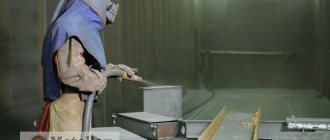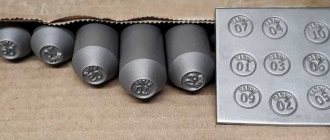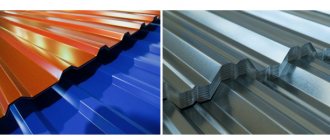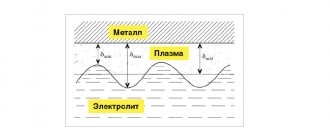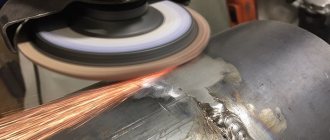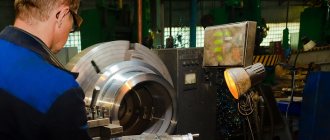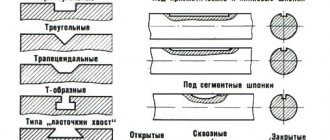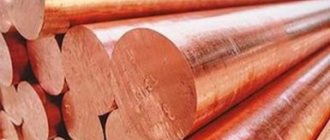From the outside, sandblasting resembles spray painting, when the metal caught under the jet changes its color. Only the surface is freed from coating and dirt and becomes matte, steel-colored.
There are different types of sandblasting used for specific purposes. Small sandblasting guns are used in everyday life. Industrial equipment is stationary, large and powerful.
What it is?
Sandblasting of metal is the mechanical removal of the top layer: rust and coating, due to numerous impacts of sand grains on the surface. Escaping from the nozzle under high pressure, the abrasive knocks out small particles of dirt, completely cleaning the metal.
A stream of sand is supplied by compressed air continuously, leaving behind a clean metal surface, removing from it:
- dirt;
- rust;
- oil stains;
- welding slags;
- paint;
- concrete and other building mixtures;
- primer.
What remains is a clean matte surface, ready for further processing.
Important!
Bitumen, tar and other viscous materials are difficult to remove by sandblasting. Abrasive particles stick to the top and are knocked out by the next stream of sand. Cleaning requires several times more sand and time. The exception is thermal sandblasting.
Degrees of preliminary surface preparation
The ISO standard defines 7 degrees of surface preparation. The following standards can be found in the specifications:
Preparation of surfaces manually or using power tools. Preparation includes scraping, wire brushing, mechanical brushing, and sanding (denoted by the letters “St”).
I. ISO-St Machining by hand and power tools Machining by hand and power tools. Before cleaning surfaces by hand or with power tools, thick layers of rust should be removed by chipping. Visible contaminants (oil, grease, dirt) are also removed. After cleaning, it must be cleaned of loose paint and dust.
II. ISO-St 2 Thorough cleaning by hand and power tools Thorough cleaning by hand and power tools. Upon visual inspection, the substrate should be clean from visible traces of oil, grease, dirt, paint, loose scale, rust and foreign matter.
III. ISO-St 3 Very thorough cleaning by hand and power tools Very thorough cleaning by hand and power tools. Essentially the same as St 2, but the substrate must be cleaned much more thoroughly - to a metallic shine.
Surface preparation by sandblasting (indicated by the letters “Sa”)
I SO-Sa Sandblasting Before sandblasting, thick layers of rust must be removed by chipping. Visible oil and grease stains and dirt are also removed. After sandblasting, the substrate must be cleaned of dust and debris.
IV. ISO-Sa 1 Light sandblasting Inspection with the naked eye should show that the surface is free of visible oil, grease and dirt, as well as loose scale, rust, paint and other foreign matter.
V. ISO-Sa 2 Thorough sandblasting. The degree of cleaning is at least 76% of the surface. Visually, the surface looks clean from oil, grease stains and dirt, from most scale, rust, paint and other foreign substances. Residual contamination has a tight fit.
VI. ISO-Sa 2.5 Very thorough sandblasting. Degree of cleaning - 96% clean surface. Inspection with the naked eye shows that the surface is cleaned of visible oil, grease stains and dirt, most of the scale, rust, paint, and other foreign substances. Residual traces of infection may only be present in the form of barely noticeable stripes and spots.
VII. ISO-Sa 3 Sandblasting to visually clean steel. The degree of cleaning is 99% of a clean surface. When examined with the naked eye, the surface looks cleared of stains of grease, oil, dirt, most of the scale and rust, paint and other foreign substances. The surface of the product must have a uniform metallic luster.
Note: Photos are for illustrative purposes only. They do not show the full extent of the preparation, which also includes cleaning operations, which are not visible from the photographs (colorless stains).
British, German and American equivalents
| ISO 8501-01 | ||
| SIS 05 59 00 | BS 4232 | SSPC-Vis 1 |
| DIN 55928 Part 4 | ||
| Sa 3 | 1st grade | White metal SP 5 |
| Sa 2.5 | 2nd grade | Almost white SP 10 |
| Sa 2 | 3rd grade | Commercial SP 6 |
Pros and cons of such cleaning of metal structures
Sandblasting has many advantages over other methods of cleaning metal and other surfaces:
- high performance;
- versatility, removes many types of contaminants;
- gentle processing;
- increasing adhesion of the treated surface;
- formation of hardening surface hardening;
- high quality cleaning;
- low cost;
- simplicity of equipment.
In most cases, the abrasive can be reused after cleaning. Sandblasting has its disadvantages. When grains of sand hit metal, a lot of dust rises. It contains a high content of quartz, iron oxides, and other harmful substances. The brown cloud consists of particles of broken sand and rust that has turned into dust. If they enter the lungs, these substances cause an occupational lung disease – silicosis.
Important!
Dust particles formed during sandblasting settle on the walls of the lungs and are not removed from the body. The disease is severe and leads to organ destruction.
When working with a sandblaster, you must wear a mask with an air filter. Professional shot blasters are provided with sealed protective suits with a supply under a helmet with a visor. When working with sandblasting, there is always a danger of falling under a stream of sand. Both the sandblaster himself and a stranger who happens to be nearby can suffer.
Water jet cleaning of concrete surfaces
To remove contaminants, special equipment is used that supplies liquids under pressure. Hydro-jet cleaning of concrete surfaces allows you to quickly and effectively renew large areas of walls. The jet power is easily adjusted.
Hydroblasting saturates concrete areas with water. This is a necessary condition for applying cement-based compounds. Before performing this procedure, the concrete surfaces to be repaired should be cleaned of weakened areas. There is also a known method of hydro-jet cleaning, which involves the preliminary removal of dirt, dust and other substances that impair the adhesion strength of the compositions.
Types of abrasives used
At the end of the 19th century, the American Benjamin Chu Tilghman drew attention to glass after a storm. They were completely cleaned of dirt by gusts of wind and sand and shone like new. He invented the first sandblasting machine, which used clean sand from the desert and sea. The hard, ribbed grains effectively removed all dirt.
Over time, the negative effects of dust on the lungs were discovered. The workers wore protective suits. We tried and began to use other materials. Modern sandblasting machines use:
- steel shot;
- corundum powder;
- glass balls;
- quartz sand;
- synthetic abrasives.
Sand is the cheapest abrasive material and continues to be used if protective equipment is available. The technology for making steel and cast iron shot is simple and at the same time dangerous. Molten metal is poured into water. As a result of boiling, pieces of metal with small fractions are formed.
Reference! In some countries it is prohibited to use sand for abrasive processing of parts. Safer materials are used.
What is metal sandblasting used for?
Sandblasting is a key metalworking process. It is used to solve the following problems:
- Cleaning metal workpieces from corrosion and exfoliated scale. Additionally, plaque, dirt, and decorative coatings are removed.
- Removing the fat film to carry out other technological operations on the part.
- Cleaning car bodies from traces of oxidation.
- Creating an unusual structure on the surface of metal products.
To create an unusual pattern on the surface of metal workpieces, large, durable abrasive material is used. It can be corundum, steel or cast iron shot. These abrasives can be reused. Large particles leave indentations in the material, resulting in an unusual texture.
Types and technology, how to sandblast correctly?
The classic version of sandblasting - abrasive particles are carried by air and hit the surface with great force, knocking out dirt particles. Modernized devices have increased the cleaning efficiency and reduced their harmfulness.
Thermoabrasive
Cleaning is carried out simultaneously with sand and flame. A narrowly directed torch removes the abrasive, simultaneously heating it and burning fuel oil, paints, and other flammable materials from the surface. The coating softened by heat treatment is easier to remove with sand.
The thermoforming apparatus, in addition to a compressor and a container with sand, has a jet burner. It is similar in design to rocket and aircraft engines, but small in size. Runs on kerosene, gasoline and other types of fuel.
Thermal processing - thermo-blasting, used by professionals. It is intended for cleaning surfaces:
- brickwork;
- stone;
- oil tanks;
- containers for fat and oil.
Thermal sandblasting removes bitumen and multi-layer paint and varnish coatings, oil stains, diesel fuel, and other fatty and viscous materials.
Reference! At home, craftsmen use low-power thermo-blasters to clean containers of oil, “age” wood, and remove thick layers of paint.
Abrasive blasting
Classic type of sandblasting. The abrasive is carried away by the air flow. The nozzle forms the jet, changing its shape to conical, flat or almost cylindrical, without expansion. Hitting the surface, sharp solid particles knock out scale, oil, and primer from the metal surface. At the same time, they themselves are partially destroyed.
Abrasive blasting is used to clean parts for painting, grinding, and galvanic coating. It is widely used in auto repair shops, cleaning bodies and wheels, and other parts exposed to dirt and moisture. The spent abrasive can be collected, screened and cleaned for reuse.
Reference! Dust-free air blasters do not pollute the air and use abrasives repeatedly.
Waterjet
Hydraulic sandblasters use water as a carrier. It passes from the pump under high pressure. Along the way, it picks up sand. Spent abrasive and removed dirt are washed away without forming dust.
Water jet cleaning is used in rooms where dust formation is unacceptable. In special chambers it is used to clean parts from water-soluble coatings. Alkali particles penetrate into the small pores of the metal and ordinary dry abrasive only pushes it deeper, sealing the pores. Water dissolves the remaining detergents and carries them away.
Using water equipment, bridges, building metal structures, sidewalks, fences and house facades are cleaned. Water jet cleaning can be done if water drains are available. It is used in outdoor conditions and in special chambers.
Advantages of sandblasting
Sandblasting metal structures is an effective way to protect parts from rust. Increases the adhesive properties of paint and varnish coatings. Advantages:
Advantages
- Abrasive blast cleaning devices are compact and practical. A mobile sand cleaning unit allows you to process even hard-to-reach surfaces.
- The price of the service is lower than alternative mechanical or chemical cleaning. Due to the low price of materials for working equipment.
- Exposure to sand does not affect the durability of the product, preserving the original structure of the material.
- The constant development of cleaning technology and the search for new abrasive materials makes the sandblasting system a leader among metalworking services.
- Cleaning with abrasive materials is a universal way to combat a range of problems on any surface. Suitable for metals with different properties.
Necessary equipment, devices
Industrial equipment for sandblasting consists of:
- main compressor supplying compressed air to the nozzle;
- an abrasive blasting machine that adds sand to the working hose;
- a sleeve through which air and sand flow;
- nozzle;
- an additional compressor supplies air to the worker’s protective suit;
- air filter.
The pressure produced by the compressor determines the power of the entire sandblasting unit. An abrasive blasting machine mixes air with sand in various ways:
- injection;
- gravitational;
- suction
An additional low-power compressor supplies air through a filter under the protective suit mask, providing the worker with the opportunity to breathe normally. Sandblasting guns are available for small jobs and home use. They have a power of 3-5 Atm and are equipped with a compact compressor. A small amount of metal stripping is carried out in a respirator.
Cleaning with power tools
This is a method of preparing metal surfaces using powered hand tools, but without the use of abrasive blasting.
Mechanized cleaning is carried out using rotating wire brushes, abrasive sanding machines, abrasive sanding discs, abrasive grinding stones, electrically or pneumatically driven sanding hammers, needle guns, and grinding wheels.
Surface areas inaccessible to such tools must be prepared manually.
Before cleaning with hand or power tools, all thick layers of rust must be removed by chipping. Visible oil, grease and dirt must also be removed.
Cleaning with a power tool is more efficient and productive than cleaning with a hand tool, but is inferior in efficiency to abrasive blast cleaning.
Main rules of the procedure
The workpiece should be installed in a position convenient for work and secured. Most of the surface to be treated should be located in a vertical plane.
Check the readiness of the device:
- Pour abrasive into the container.
- Connect the compressor.
- Check its operation at idle speed.
- Point the nozzle towards the part and turn on the sand supply.
The abrasive jet is moved vertically or horizontally over the surface being treated. Each subsequent stripe should overlap the previous one by 30%.
Important!
Massive parts weighing more than a ton do not need to be secured, just placed on a flat surface.
Control of the cleaned metal surface
Methods for monitoring a cleaned surface before painting are regulated by ISO 8502 .
- ISO 8502-1 specifies a method for detecting soluble corrosion products on a cleaned surface using an indicator tape.
- ISO 8502-2 specifies a method for the laboratory analysis of chlorides in water collected after rinsing a cleaned surface measuring 250 x 100 mm.
- ISO 8502-3 specifies a method for assessing surface dust control using adhesive tape. Surface dustiness is assessed in points according to the figure.
- ISO 8502-4 establishes a methodology for assessing the likelihood of moisture condensation on a cleaned surface.
- ISO 8502-5 specifies a method for the determination of chlorides using an indicator tube.
- ISO 8502-6 provides the Brestle method for the selection of soluble contaminants from a cleaned surface.
Safety precautions
Before working with sandblasting equipment, you must wear a protective suit. Check all cables and hoses for defects. Replace immediately if necessary. Inspect the nozzle. If the degree of wear is large, install a new nozzle.
The work site must be cleared of foreign objects and protected from people. If the shot blaster is working with an assistant, he should be behind him and go out to re-edge the part or fill the sand with the machine turned off. It is strictly forbidden to point the nozzle at yourself or other people. This could result in serious injury.
Features of high-altitude cleaning
Industrial climbers prepare metal structures for painting with careful adherence to safety measures. High-altitude work is accompanied by:
- insurance for industrial climbers (working people, tools, and equipment are secured with ropes and cables);
- reliable fastening of compressors, hoses, electrical wiring to metal structures;
- ensuring the protection of passers-by or enterprise personnel (the area under the work site is fenced and warning signs are posted).
The services of industrial climbers are beneficial:
- the work of high-altitude workers in any climatic conditions (in hot southern regions, in the Far North);
- mobility of employees (speeds up the departure of industrial climbers for urgent orders);
- reasonable prices for cleaning work;
- using modern equipment and materials;
- speed of cleaning, compliance with contractual deadlines.
Orders for cleaning metal structures are not limited in height, complexity of work, degree and nature of contamination. You can resolve all technical and contractual issues during a telephone consultation (free call) or ask in an email to the site.
Processing price per m2
The cost of sandblasting depends on the configuration of the part, the complexity of its processing and the company. Approximate cost:
- casting from 290 rub./m2;
- fences and gratings 300 rub./m2;
- roofing metal 380 rub./m2;
- vertically located steel structures 300 rub./m2;
- car wheels 500 rub. per piece;
- kenguryatnik 670 rub.
For 250 rubles. specialists will completely clean the car body and only 1 m2 of the ship’s hull.
Sandblasting is the cheapest way to clean metal. With its help, it is easy to process profiles of any complexity, remove scale and old paint from water pipes and tanks. Household equipment is used to clean cars during repairs, remove old finishes from walls, clean porches and paths, and wash facades. The scope is wide. It is necessary to remember safety at all times.
Cleaning with hand tools
Manual metal cleaning is a method of preparing metal surfaces using hand tools, without the use of power.
Manual cleaning of the surface is carried out using chipping hammers to chip off rust and other contaminants, hand wire brushes, spatulas, scrapers, abrasive skins, and emery.
Chip hammers are used to remove thick, loose layers of rust to make abrasive blast cleaning more economical. Hammering is often carried out in combination with brushing. Processing with such hammers is not suitable for general surface preparation before coating.
Hand tool cleaning is sometimes used as an initial pre-cleaning step to remove relatively easy-to-remove contaminants before using power tools.
We provide services
Our services will be especially relevant for small industries, construction companies and organizations, repair teams, specialists involved in road construction and more. Sandblasting involves the use of expensive equipment, which is not always rational for builders to purchase. In addition, working with equipment and performing assigned tasks can only be carried out by a highly specialized specialist with the necessary knowledge and considerable experience. We are ready to provide a sandblaster with his own processing equipment at your disposal!
